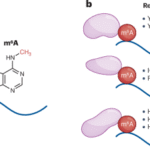Scientific research is built on the foundation of accurate, reliable data. Unfortunately, awareness of unreliable papers is often too low, and flawed research can continue to influence new studies long after it has been discredited. However, by using some straightforward technological solutions, researchers, publishers, and reviewers can help prevent bad science from spreading through the literature.
The Rise of Retractions
The number of research paper retractions has surged over the past few decades, reaching nearly 14,000 last year compared to less than 1,000 annually before 2009. Retractions are a normal and healthy part of the scientific process, as they help correct the record when mistakes are discovered or when results cannot be reproduced. Not all retractions indicate misconduct; sometimes, they result from honest errors. Regardless of the reason, it is crucial that erroneous results do not continue to circulate in the scientific literature.
One of the often-overlooked problems is that papers citing retracted research remain in circulation without any indication of their reliance on unreliable data. For instance, a Nature paper on stem cells was retracted 22 years after publication, having been cited nearly 5,000 times. While not all these citations are invalid, the researchers who cited it should be aware of the retraction and assess whether it affects their own work. Unfortunately, there is currently no systematic way for publishers to alert citing authors when an article is retracted. Implementing such a system is essential to maintaining the integrity of the scientific record.
Tackling the Problem at Its Root
The scientific community needs a large-scale mechanism to prevent flawed research from contaminating future studies. Publications and citations are vital in academia, but distinguishing genuine papers from dubious ones can be challenging. The current editorial, peer-review, and publishing processes are heavily dependent on trust, leading to potential distortions.
Some businesses, known as “paper mills,” exploit this trust-based system by producing fake manuscripts based on fabricated or manipulated data. These entities profit by selling these manuscripts and manipulating the peer-review process. Reputable publishers can inadvertently contribute to this problem by prioritizing volume over quality and using individuals with questionable practices as reviewers and editors.
To address these issues, all stakeholders—researchers, publishers, institutions, and funders—must collaborate to uphold the integrity of scientific records. Scientists who identify problematic papers should be encouraged to report them, but the process is often opaque, time-consuming, and fraught with challenges. As a result, many researchers are reluctant to come forward, especially when power dynamics or reputational risks are involved.
Tools and Platforms for Change
While traditional methods for raising concerns about flawed papers exist, they are often inadequate. New tools and platforms can provide more effective solutions. For example, platforms like PubPeer allow post-publication peer review, where researchers can publicly comment on problematic studies. However, publishers do not typically monitor these comments, and authors are not obligated to respond, leaving many critical issues unresolved.
To combat this, technological tools like the Problematic Paper Screener (PPS), launched in 2021, have emerged. This software initially flagged nonsensical, randomly generated text in scientific papers. It now tracks various issues to alert the community to potential errors. The PPS identifies “tortured phrases”—unnatural terms likely generated by artificial intelligence or other deceptive methods. These phrases are added to a database of “fingerprints” that the PPS uses to scan the 130 million scientific documents indexed by the data platform Dimensions. So far, over 5,800 fingerprints have been collected.
Despite the promise of such tools, progress is slow. The PPS flagged more than 16,000 papers containing five or more tortured phrases, yet only 18% have been retracted. To make a significant impact, researchers, editors, referees, and typesetters must remain vigilant and proactively identify these issues.
Moving Forward
To prevent flawed research from spreading, the scientific community must adopt a proactive approach. This includes better systems for flagging and retracting questionable studies, alerting scholars about citations of retracted articles, and utilizing technological tools that can identify errors more efficiently. Publishers and institutions should support these efforts by providing transparent, accessible processes for raising concerns and ensuring that post-publication reviews are acknowledged and acted upon.
By improving practices and utilizing available tools, the scientific community can minimize the impact of flawed research and maintain the credibility and reliability of the literature. Ensuring the integrity of scientific work is not only essential for advancing knowledge but also for maintaining public trust in science.











